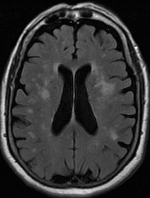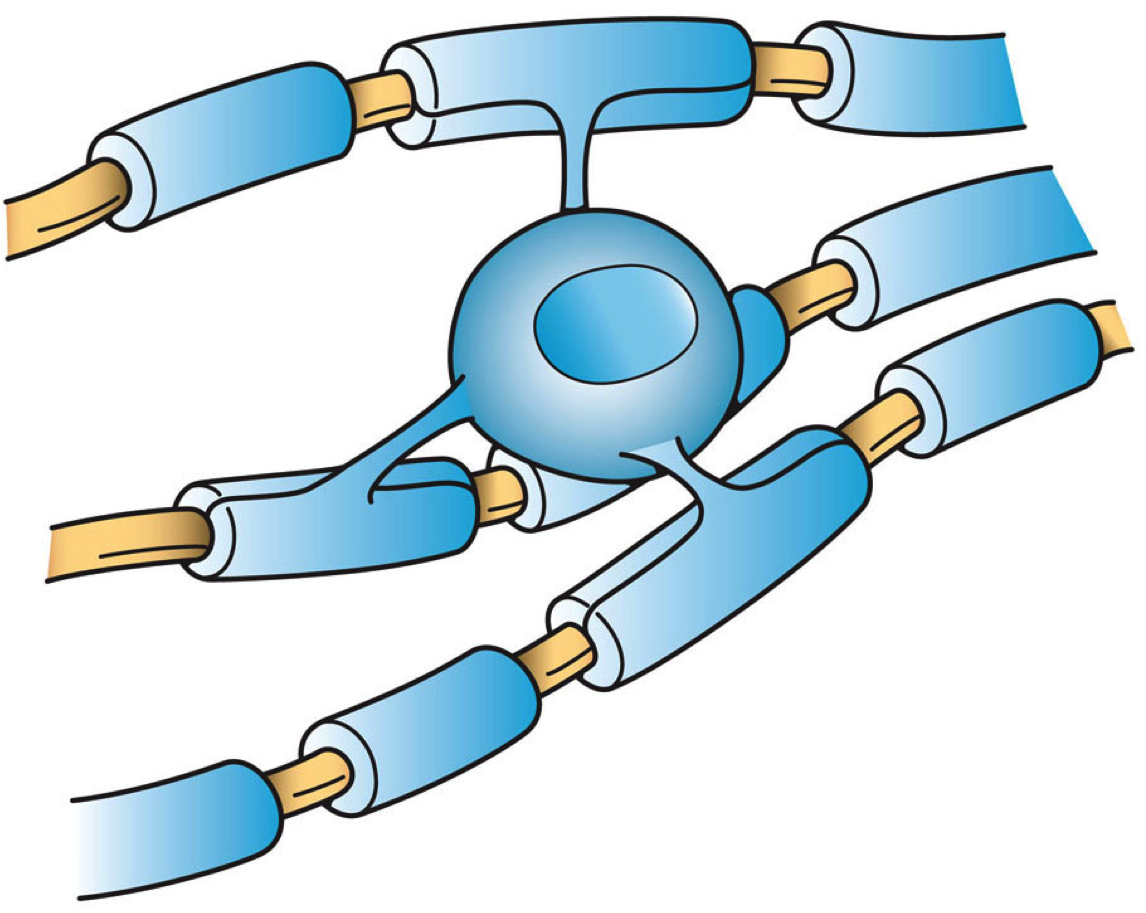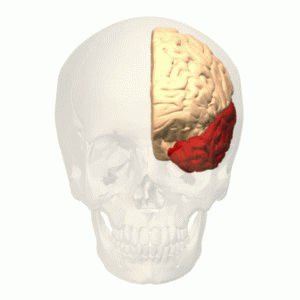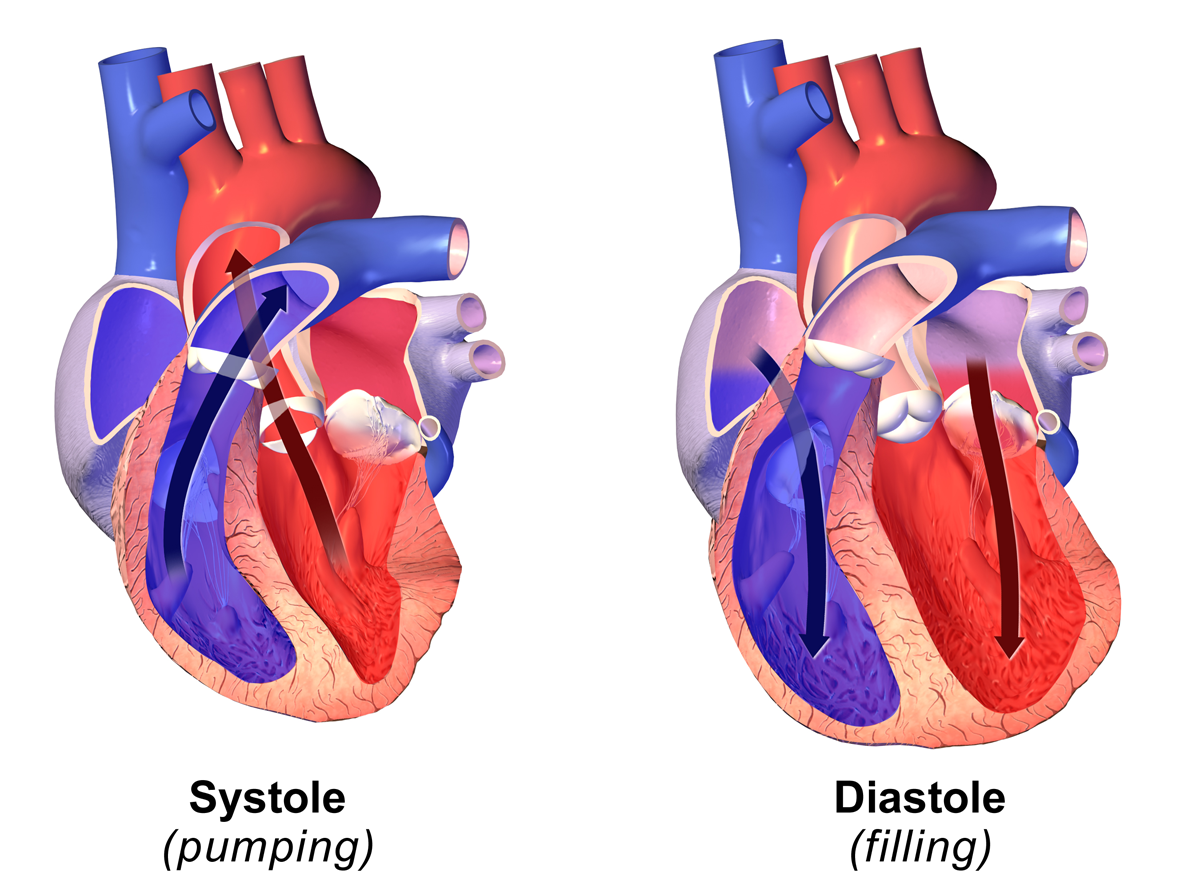|
Hyperintensities
A hyperintensity or T2 hyperintensity is an area of high intensity on types of magnetic resonance imaging (MRI) scans of the human brain, brain of a human or of another mammal that reflect lesions produced largely by demyelination and axonal loss. These small regions of high intensity are observed on Spin-spin relaxation time, T2 weighted MRI images (typically created using Fluid attenuated inversion recovery, 3D FLAIR) within cerebral white matter (white matter lesions, Leukoaraiosis, white matter hyperintensities or WMH) or subcortical gray matter (gray matter hyperintensities or GMH). The volume and frequency is strongly associated with increasing age. They are also seen in a number of List of neurological disorders, neurological disorders and Mental disorder, psychiatric illnesses. For example, deep white matter hyperintensities are 2.5 to 3 times more likely to occur in bipolar disorder and major depressive disorder than control subjects. WMH volume, calculated as a potential ... [...More Info...] [...Related Items...] OR: [Wikipedia] [Google] [Baidu] |
Leukoaraiosis
Leukoaraiosis is a particular abnormal change in appearance of white matter near the lateral ventricles. It is often seen in aged individuals, but sometimes in young adults. On MRI, leukoaraiosis changes appear as white matter hyperintense, hyperintensities (WMHs) in T2 FLAIR images. On CT scans, leukoaraiosis appears as hypodense periventricular white-matter lesions. The term "leukoaraiosis" was coined in 1986 by Vladimir Hachinski, Hachinski, Potter, and Merskey as a descriptive term for rarefaction ("araiosis") of the white matter, showing up as decreased density on CT and increased signal intensity on T2/FLAIR sequences (white matter hyperintensities) performed as part of MRI brain scans. These white matter changes are also commonly referred to as periventricular white matter disease, or white matter hyperintensities (WMH), due to their bright white appearance on Magnetic resonance imaging#How MRI works, T2 MRI scans. Many patients can have leukoaraiosis without any associat ... [...More Info...] [...Related Items...] OR: [Wikipedia] [Google] [Baidu] |
Major Depressive Disorder
Major depressive disorder (MDD), also known as clinical depression, is a mental disorder characterized by at least two weeks of pervasive depression (mood), low mood, low self-esteem, and anhedonia, loss of interest or pleasure in normally enjoyable activities. Introduced by a group of US clinicians in the mid-1970s, the term was adopted by the American Psychiatric Association for this syndrome, symptom cluster under mood disorders in the 1980 version of the ''Diagnostic and Statistical Manual of Mental Disorders'' (DSM-III), and has become widely used since. The disorder causes the second-most years lived with disability, after low back pain, lower back pain. The diagnosis of major depressive disorder is based on the person's reported experiences, behavior reported by family or friends, and a mental status examination. There is no laboratory test for the disorder, but testing may be done to rule out physical conditions that can cause similar symptoms. The most common time o ... [...More Info...] [...Related Items...] OR: [Wikipedia] [Google] [Baidu] |
CADASIL
CADASIL or CADASIL syndrome, involving cerebral autosomal dominant arteriopathy with subcortical infarcts and leukoencephalopathy, is the most common form of hereditary stroke disorder and is thought to be caused by mutations of the '' NOTCH3'' gene on chromosome 19. The disease belongs to a family of disorders called the leukodystrophies. The most common clinical manifestations are migraine headaches and transient ischemic attacks or strokes, which usually occur between 40 and 50 years of age, although MRI is able to detect signs of the disease years prior to clinical manifestation of disease. The condition was identified and named by French researchers Marie-Germaine Bousser and Elisabeth Tournier-Lasserve in the 1990s. Together with two other researchers, Hugues Chabriat and Anne Joutel, they received the 2019 Brain Prize for their research into the condition. Signs and symptoms CADASIL may start with attacks of migraine with aura or subcortical transient ischemic at ... [...More Info...] [...Related Items...] OR: [Wikipedia] [Google] [Baidu] |
Gliosis
Gliosis is a nonspecific reactive change of glial cells in response to damage to the central nervous system (CNS). In most cases, gliosis involves the proliferation or hypertrophy of several different types of glial cells, including astrocytes, microglia, and oligodendrocytes. In its most extreme form, the proliferation associated with gliosis leads to the formation of a glial scar. The process of gliosis involves a series of cellular and molecular events that occur over several days. Typically, the first response to injury is the migration of macrophages and local microglia to the injury site. This process, which constitutes a form of gliosis known as microgliosis, begins within hours of the initial CNS injury. Later, after 3–5 days, oligodendrocyte precursor cells are also recruited to the site and may contribute to remyelination. The final component of gliosis is astrogliosis, the proliferation of surrounding astrocytes, which are the main constituents of the glial sca ... [...More Info...] [...Related Items...] OR: [Wikipedia] [Google] [Baidu] |
Axons
An axon (from Greek ἄξων ''áxōn'', axis) or nerve fiber (or nerve fibre: see spelling differences) is a long, slender projection of a nerve cell, or neuron, in vertebrates, that typically conducts electrical impulses known as action potentials away from the nerve cell body. The function of the axon is to transmit information to different neurons, muscles, and glands. In certain sensory neurons ( pseudounipolar neurons), such as those for touch and warmth, the axons are called afferent nerve fibers and the electrical impulse travels along these from the periphery to the cell body and from the cell body to the spinal cord along another branch of the same axon. Axon dysfunction can be the cause of many inherited and acquired neurological disorders that affect both the peripheral and central neurons. Nerve fibers are classed into three types group A nerve fibers, group B nerve fibers, and group C nerve fibers. Groups A and B are myelinated, and group C are unmyelina ... [...More Info...] [...Related Items...] OR: [Wikipedia] [Google] [Baidu] |
Oligodendrocyte
Oligodendrocytes (), also known as oligodendroglia, are a type of neuroglia whose main function is to provide the myelin sheath to neuronal axons in the central nervous system (CNS). Myelination gives metabolic support to, and insulates the axons of most vertebrates. A single oligodendrocyte can extend its Cellular extensions, processes to cover up to 40 axons, that can include multiple adjacent axons. The myelin sheath is segmented along the axon's length at gaps known as the nodes of Ranvier. In the peripheral nervous system the myelination of axons is carried out by Schwann cells. Oligodendrocytes are found exclusively in the CNS, which comprises the brain and spinal cord. They are the most widespread cell lineage, including oligodendrocyte progenitor cells, pre-myelinating cells, and mature myelinating oligodendrocytes in the CNS white matter. Non-myelinating oligodendrocytes are found in the grey matter surrounding and lying next to neuronal cell bodies. They are known as neu ... [...More Info...] [...Related Items...] OR: [Wikipedia] [Google] [Baidu] |
Neurobiology Of Aging
''Neurobiology of Aging'' is a peer-reviewed monthly scientific journal published by Elsevier. The editor-in-chief is Peter R. Rapp. ''Neurobiology of Aging'' publishes research in which the primary emphasis addresses the mechanisms of nervous system-changes during aging and in age-related diseases. Approaches are behavioral, biochemical, cellular, molecular, morphological, neurological, neuropathological, pharmacological, and physiological. Abstracting and indexing ''Neurobiology of Aging'' is abstracted and indexed in * BIOSIS, * Current Contents/Life Sciences, * EMBASE, * MEDLINE, * PsycINFO, * Research Alert, * Science Citation Index, * Scopus. According to the ''Journal Citation Reports'', ''Neurobiology of Aging'' has a 2020 impact factor The impact factor (IF) or journal impact factor (JIF) of an academic journal is a type of journal ranking. Journals with higher impact factor values are considered more prestigious or important within their field. The Impact ... [...More Info...] [...Related Items...] OR: [Wikipedia] [Google] [Baidu] |
Gait (human)
A gait is a manner of Limb (anatomy), limb movements made during Animal locomotion, locomotion. Human gaits are the various ways in which humans can move, either naturally or as a result of specialized training. Human gait is defined as Bipedalism, bipedal Bipedal gait cycle, forward propulsion of the center of gravity of the human body, in which there are Sinuosity, sinuous movements of different segments of the body with little energy spent. Various gaits are characterized by differences in limb movement patterns, overall velocity, forces, kinetic and potential energy cycles, and changes in contact with the ground. Classification Human gaits are classified in various ways. Each gait can be generally categorized as either natural (one that humans use instinctively) or trained (a non-instinctive gait learned via training). Examples of the latter include hand walking and specialized gaits used in martial arts. Gaits can also be categorized according to whether the person remains ... [...More Info...] [...Related Items...] OR: [Wikipedia] [Google] [Baidu] |
Cognitive Deficit
Cognitive impairment is an inclusive term to describe any characteristic that acts as a barrier to the cognition process or different areas of cognition. Cognition, also known as cognitive function, refers to the mental processes of how a person gains knowledge, uses existing knowledge, and understands things that are happening around them using their thoughts and senses. Cognitive impairment can be in different domains or aspects of a person's cognitive function including memory, attention span, planning, reasoning, decision-making, language (comprehension, writing, speech), executive functioning, and visuospatial functioning. The term cognitive impairment covers many different diseases and conditions and may also be symptom or manifestation of a different underlying condition. Examples include impairments in overall intelligence (as with intellectual disabilities), specific and restricted impairments in cognitive abilities (such as in learning disorders like dyslexia), neuropsyc ... [...More Info...] [...Related Items...] OR: [Wikipedia] [Google] [Baidu] |
Temporal Lobe
The temporal lobe is one of the four major lobes of the cerebral cortex in the brain of mammals. The temporal lobe is located beneath the lateral fissure on both cerebral hemispheres of the mammalian brain. The temporal lobe is involved in processing sensory input into derived meanings for the appropriate retention of visual memory, language comprehension, and emotion association. ''Temporal'' refers to the head's temples. Structure The temporal lobe consists of structures that are vital for declarative or long-term memory. Declarative (denotative) or explicit memory is conscious memory divided into semantic memory (facts) and episodic memory (events). The medial temporal lobe structures are critical for long-term memory, and include the hippocampal formation, perirhinal cortex, parahippocampal, and entorhinal neocortical regions. The hippocampus is critical for memory formation, and the surrounding medial temporal cortex is currently theorized to be critical f ... [...More Info...] [...Related Items...] OR: [Wikipedia] [Google] [Baidu] |
Diastole
Diastole ( ) is the relaxed phase of the cardiac cycle when the chambers of the heart are refilling with blood. The contrasting phase is systole when the heart chambers are contracting. Atrial diastole is the relaxing of the atria, and ventricular diastole the relaxing of the ventricles. The term originates from the Greek word (''diastolē''), meaning "dilation", from (''diá'', "apart") + (''stéllein'', "to send"). Role in cardiac cycle A typical heart rate is 75 beats per minute (bpm), which means that the cardiac cycle that produces one heartbeat, lasts for less than one second. The cycle requires 0.3 sec in ventricular systole (contraction)—pumping blood to all body systems from the two ventricles; and 0.5 sec in diastole (dilation), re-filling the four chambers of the heart, for a total of 0.8 sec to complete the cycle. Early ventricular diastole During early ventricular diastole, pressure in the two ventricles begins to drop from the peak reached during systole ... [...More Info...] [...Related Items...] OR: [Wikipedia] [Google] [Baidu] |
Brachial Artery
The brachial artery is the major blood vessel of the (upper) arm. It is the continuation of the axillary artery beyond the lower margin of teres major muscle. It continues down the ventral surface of the arm until it reaches the cubital fossa at the Elbow-joint, elbow. It then divides into the radial artery, radial and ulnar artery, ulnar artery, arteries which run down the forearm. In some individuals, the bifurcation occurs much earlier and the ulnar and radial arteries extend through the upper arm. The pulse of the brachial artery is palpation, palpable on the anterior aspect of the elbow, medial to the tendon of the Biceps brachii muscle, biceps, and, with the use of a stethoscope and sphygmomanometer (blood pressure cuff), often used to measure the blood pressure. The brachial artery is closely related to the median nerve; in proximal regions, the median nerve is immediately lateral to the brachial artery. Distally, the median nerve crosses the medial side of the brachial ... [...More Info...] [...Related Items...] OR: [Wikipedia] [Google] [Baidu] |






